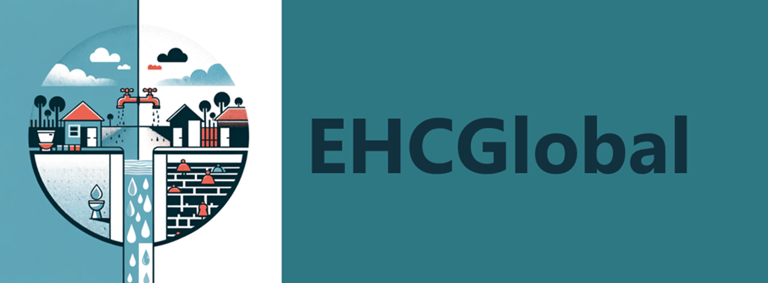Chlorination: The Backbone of Safe Water
Safe drinking water is essential for survival, yet millions still face life-threatening risks from unsafe supplies. Water chlorination, a groundbreaking 20th-century innovation, has saved millions of lives by reducing deadly waterborne diseases like cholera and typhoid. In this post, I delve into its transformative global impact and its ongoing importance for health equity. I invite your comments, experiences, and critiques.
DRINKING WATER
By John Dennis
1/15/20253 min read


A Simple Act That Saves Millions
Every day, billions of people turn on their taps without fear of deadly waterborne diseases. This seemingly simple act represents one of humanity's greatest public health achievements: the chlorination of water supplies.
Chlorination works by adding carefully regulated amounts of chlorine to water, killing harmful pathogens like bacteria and viruses. What makes it particularly valuable is its residual effect – it continues protecting water as it travels through distribution systems, or in household tanks and containers, protecting against recontamination. While its impact spans the globe, saving countless lives across continents, millions still lack access to this essential treatment, and some communities actively resist its use.
________________________________________________________________________
A Revolution in Public Health Protection
The global impact of water chlorination cannot be overstated. This single innovation has:
Prevented millions of deaths worldwide, particularly among children under five
Dramatically reduced the incidence of cholera, typhoid, and dysentery across continents
Created healthier, more productive communities in both developed and developing nations
Generated massive economic returns: according to Matus Samel, Senior Manager of Policy and Insights at Economist Impact, 'Every US$1 invested in climate-resilient water and sanitation returns at least US$7 for African economies. Sub-Saharan Africa alone could gain more than 5% of its GDP, equivalent to US$200bn annually, if sufficient investment in water and sanitation is made'
The Proof Is in the Numbers
The United States provides compelling evidence of chlorination's effectiveness. When Jersey City first implemented water chlorination in 1908, it sparked a nationwide transformation. Typhoid fever rates plummeted from 100 cases per 100,000 people in 1900 to just 33.8 cases by 1920. By 2006, the disease had become so rare that only 0.1 cases per 100,000 people were reported, mostly from international travel (CDC).
This dramatic success story provided the evidence needed to drive global adoption. If chlorination could virtually eliminate waterborne diseases in one country, it could do the same worldwide.
__________________________________________________________________________
Global Implementation, Global Impact
The impact of chlorination has been particularly profound in developing nations, where waterborne diseases once devastated entire communities. During the 1991 cholera outbreak in Latin America, Peru alone reported 321,334 cases of cholera, with 119,063 people hospitalized and 2,906 deaths. The widespread implementation of chlorination proved crucial in controlling the epidemic, demonstrating its effectiveness as an emergency public health measure.
Beyond emergency response, routine chlorination has transformed public health outcomes across the globe. In regions where it has been successfully implemented, communities have seen:
Sharp decreases in childhood mortality
Reduced burden on healthcare systems
Improved school attendance
Enhanced economic productivity
Stronger, more resilient populations
Notwithstanding the huge infrastructural and technical challenges, we can say with confidence that the ongoing cholera outbreak occurring right now across multiple regions of Africa, that has devastated families and communities, could have been controlled more effectively if water supplies were properly treated and clean chlorinated water distributed directly to households.
_________________________________________________________________________
The Path Forward
Despite its proven benefits, access to chlorinated water remains uneven across the globe. Many low-income communities still lack this basic health protection, creating a stark divide in public health outcomes. This disparity represents both a challenge and an opportunity: we know what works; we just need to implement it more widely.
The economic argument for global chlorination is compelling. The substantial return on investment through health savings and productivity gains makes water treatment one of the most cost-effective public health interventions available. When we consider the human cost of inaction – the preventable deaths, the lost productivity, the burden on healthcare systems – the case for global implementation becomes even stronger.
__________________________________________________________________________
A Call to Action
The success of water chlorination represents one of the greatest public health achievements of the 20th century. The evidence is clear: when communities gain access to chlorinated water, health outcomes improve dramatically. This isn't just theory – it's been proven time and time again, from Jersey City to Latin America and beyond.
I welcome your comments, experiences and critiques.
In my next post, I will examine the key challenges of implementing chlorination globally, with a particular focus on social and cultural considerations, and explore their impacts on communities worldwide.
15/01/2025


